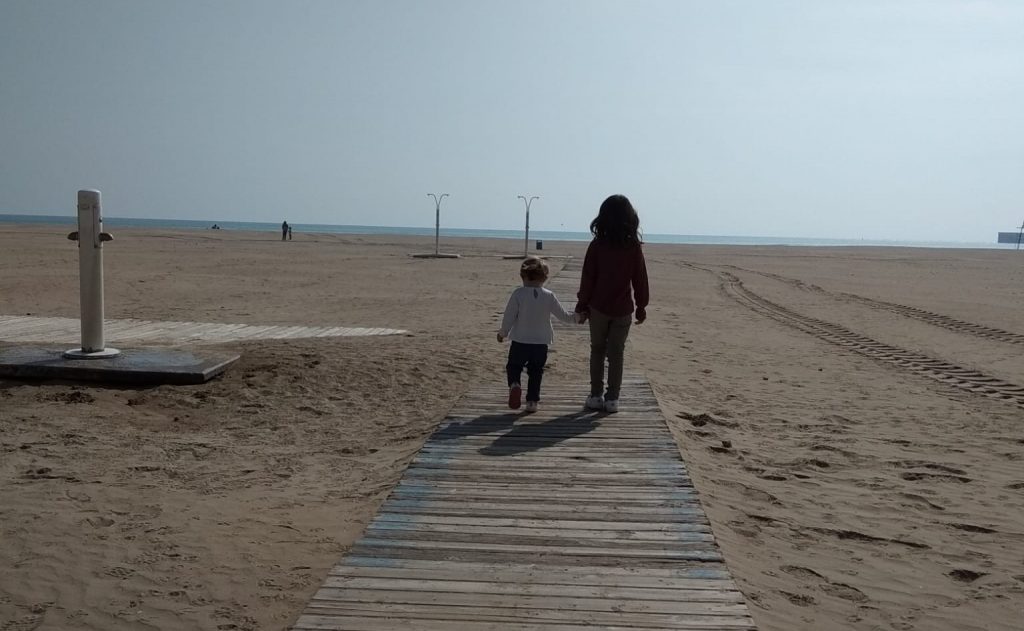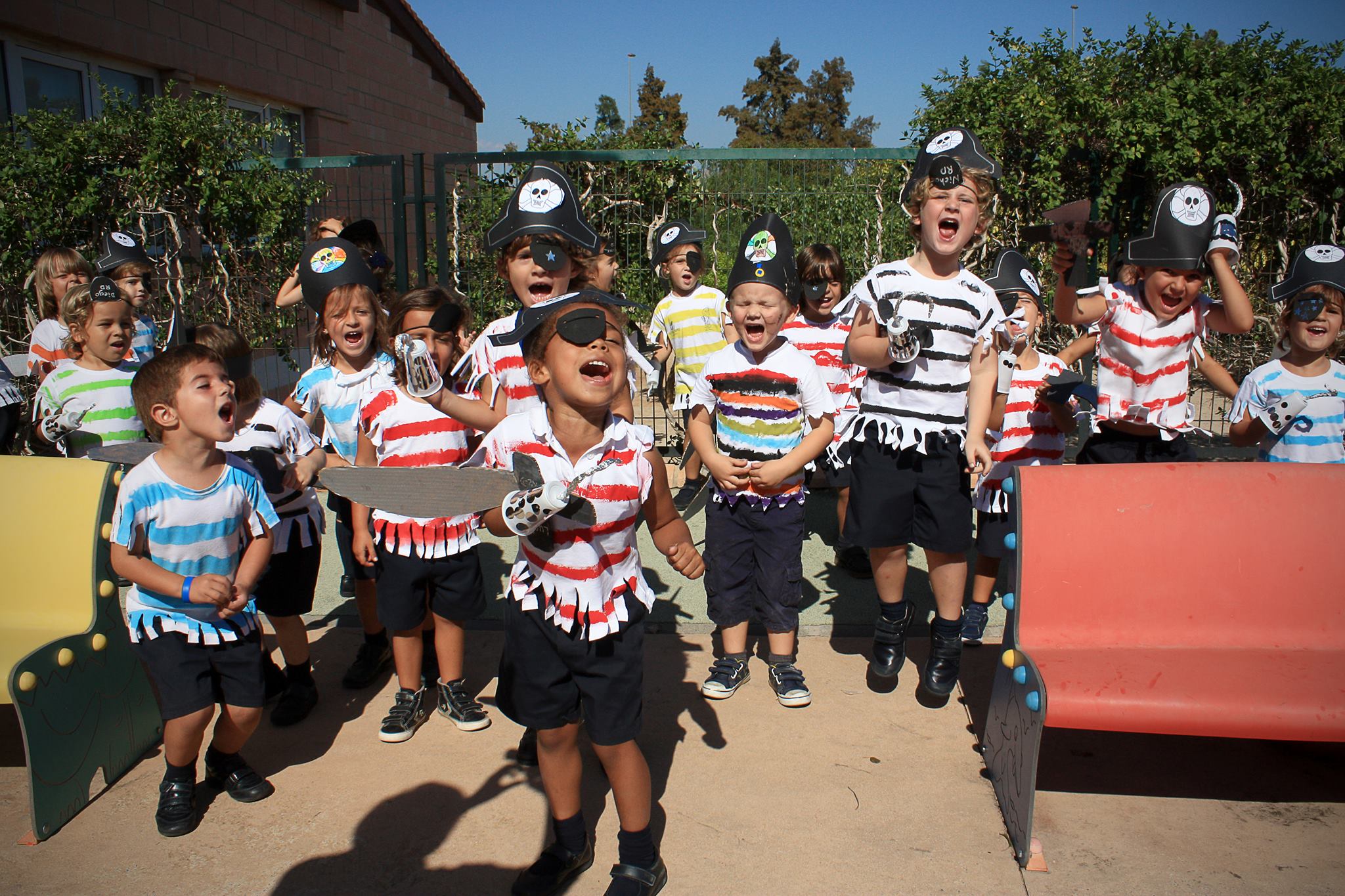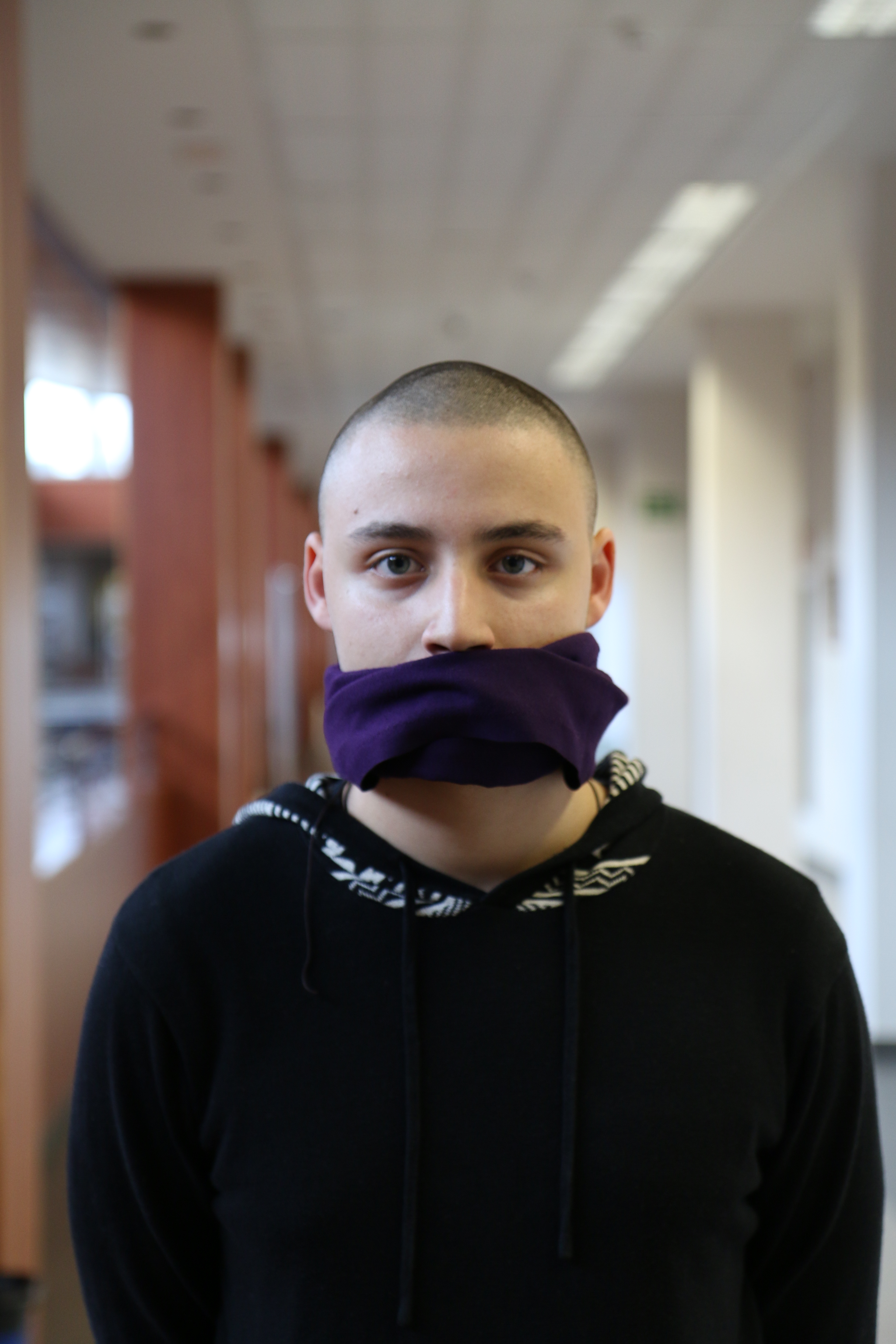
Silvia Sanchis, Departamento Psicopedagógico de Primaria
Muchos de nosotros hemos experimentado sensaciones extrañas al salir por primera vez a la calle para ir a comprar, o hacer cualquier gestión a lo largo de esta cuarentena. Ver las calles vacías, la sensación de precaución cuando te cruzas con alguien en el pasillo del supermercado, el tener que guardar las distancias, tomar las medidas de protección necesarias, mascarillas, guantes, etc. Casi seguro que hemos sentido la necesidad de compartir nuestra extrañeza con alguien al llegar de nuevo a casa.
Hay quien necesita imperiosamente salir todos los días, aunque sea a tirar la basura. Hay quien retrasa el salir de casa todo lo que puede porque no se siente a gusto con este nuevo escenario.
¿Cómo van a reaccionar los niños cuando salgan por primera vez a la calle?
Damos por hecho que como son niños y necesitan actividad y aire libre, todos lo van a acoger como agua de mayo. Y es cierto, algunos lo están deseando y saldrán disparados. Tendremos que dejarles muy claro qué es lo que pueden hacer y lo qué no, hasta donde ir, cómo deben reaccionar. Sujetar ese ímpetu puede que sea estresante para los adultos y difícil para los niños.
Sin embargo, no debe extrañarnos si algunos otros muestran cierta reticencia o incluso temor a salir a la calle.
Nos hemos pasado más de un mes diciéndoles que no pueden salir, que hay un virus ahí fuera que nos pone malitos y además no lo podemos ver. Hemos modificado (o deberíamos haberlo hecho) sus hábitos de higiene, pidiéndoles casi compulsivamente que se laven las manos, que se tapen con el brazo al toser. Han estado expuestos a las noticias. No se ha hablado de otra cosa. El coronavirus ha calado muy hondo en nuestras vidas.
¿Qué pasa ahora?, ¿Ya no está?, ¿Se ha ido? ¿Cómo les explicamos que ya pueden salir?
Los niños mayores tienen más capacidad para entender la situación. Saben y aceptan que, aunque el riesgo no ha pasado, podemos y debemos empezar a normalizar nuestros hábitos con precauciones.
A los niños más pequeños podemos explicárselo de una forma más creativa, con algo de fantasía, algo así como que el virus está tan aburrido ya de no ver a nadie por la calle que está flojito y por eso ya no hay peligro en salir un ratito a la calle. Pero eso sí, con precaución. Aun no podemos jugar todavía con nuestros amiguitos en el parque no vaya a ser que piense que es divertido y se active de nuevo. Si tenemos cuidadito, nos lavamos antes y después, nos cambiamos la ropa etc., va a seguir aburrido y no se nos pegará. Cada uno que cree su propio argumento, el más ajustado al niño.
Si aun así el niño se muestra temeroso o incluso se niega a salir, creo que no hay que forzarles a ello. Hay que tener paciencia y acompañarlos en el proceso. Podemos realizar con ellos unos pasos sucesivos: salir al rellano de la escalera, bajar, abrir la puerta del zaguán, estar un ratito solo en la calle, dar unos pasos y volver, etc., para ir desensibilizando esa situación que le genera temor. Con esta estrategia podemos ayudarle a afrontar, no solo este temor, sino cualquier otro que el niño pueda experimentar. Se trata de exponerle progresiva y gradualmente al temor dando pequeños pasos hasta que este desaparezca por completo. No hay que forzarle a afrontar un paso si no está preparado. Un pequeño truco es incluso pararle un poco, preguntarle si está totalmente seguro de que quiere afrontar el paso. Así reforzaremos su fortaleza.
Espero que esta progresiva vuelta a la normalidad transcurra lo mejor posible. Como siempre estaremos aquí para ayudarles.
Silvia Sanchis, Primary Psychopedagogy Department
Many of us have experienced strange sensations when going out to the street for the first time to go shopping, or run errands throughout this quarantine. Seeing the empty streets, the feeling of caution when you meet someone in the supermarket, having to keep your distance, taking the necessary protective measures, masks, gloves, etc. We have almost certainly felt the need to share our strangeness with someone when we get home again.
There are those who urgently need to go out every day, even if it is only to throw away the garbage. There are those who avoid leaving the house as much as they can because they do not feel comfortable with this new scenario.
How are children going to react when they first go outside?
We take it for granted that since they are children and need activity and being outdoors, they will all be thrilled with the idea of going out. And it is true, many long for it and will rush to leave the house. We need to make sure that they clearly know what they can and cannot do, how far we can go, how they should react. Managing that momentum can be stressful for both adults and children.
However, it should not surprise us if some others show some reluctance or even fear of going outside.
We have spent more than a month telling them that they cannot get out, that there is a virus out there that makes us sick and we also cannot see it. We have changed (or should have changed) their hygiene habits, almost compulsively asking them to wash their hands, to cover their arms when coughing. They have been exposed to the news. This has been the only topic of discussion. The coronavirus has penetrated deep into our lives.
What happens now? Is it gone? How do we explain them they can now go out?
Older children have more capacity to understand the situation. They know and accept that, although the risk has not passed, we can and must begin to normalize our habits with precautions.
We can explain it to the younger children in a more creative way, with some fantasy, like the virus has weakened after being bored of not seeing anyone on the streets and so it is no longer dangerous to go out for a little while. But we need to do it with caution. We still can’t play with our friends in the park, lest the virus thinks it is fun and gets active again. If we are careful, we wash our hands before and after, we change our clothes, etc., it will continue being bored and will not stick to us. Each one shall make up their own argument, the one that better suits their children.
If a child is still fearful or even refuses to go out, I believe they should be forced. We have to be patient and accompany them in the process. We can implement a clear set of steps to follow with them: go out to the stair landing, go down the stairs, open the door to the hallway, spend a little time on the street, take a few steps and return, etc., to gradually desensitize the situation that creates fear. This strategy can be useful to help them deal with not only this fear, but with any other that they may experience. It is about helping children to gradually face their fears by taking small steps, until they completely disappear. We should not force them to take a step if they are not ready. A small trick we can use is to ask them whether they are totally sure that they want to move forward. This way, we are strengthening their self-esteem.
I hope that this progressive return to normality goes as smoothly as possible. As always, we are here to help you.











Leave a Reply